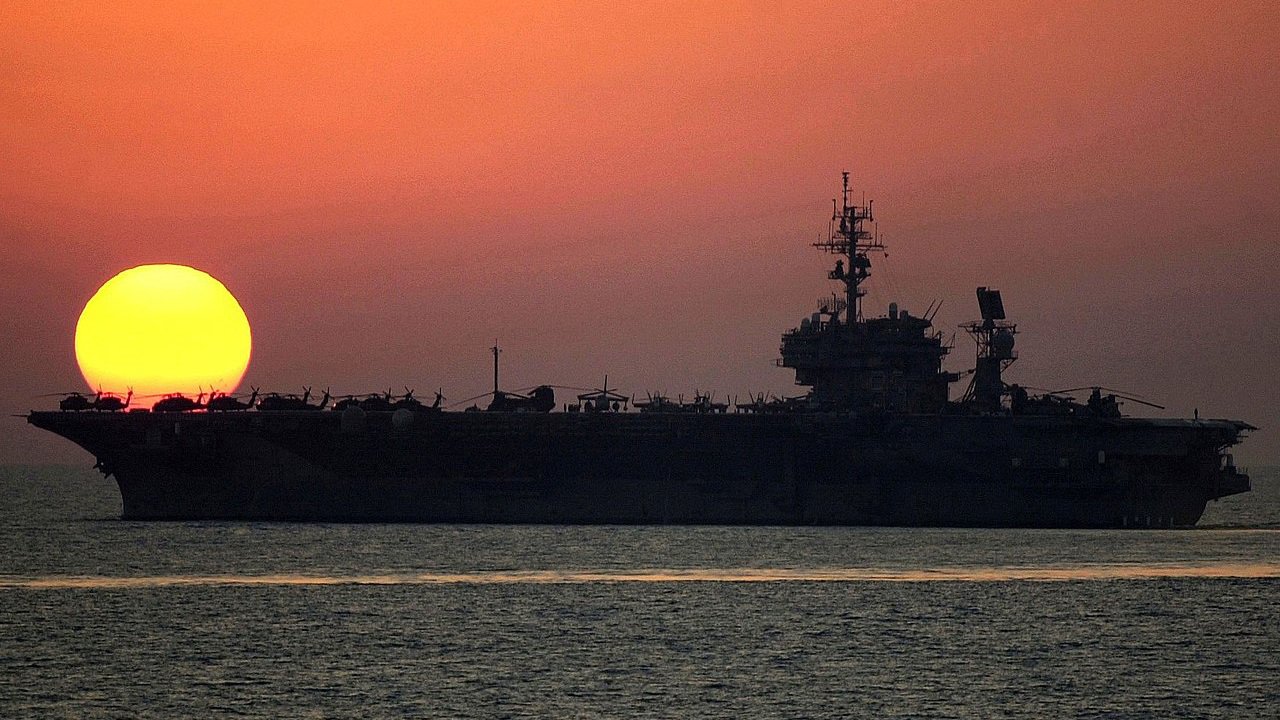Yes, the U.S. Navy’s aircraft carriers are the most powerful warship on the planet, at least according to many experts. But even these fine warships have an endpoint. And many are not turned into floating museums, but simply scrapped. The US Navy’s last commissioned conventionally powered aircraft carrier, the former USS Kitty Hawk, finished its final voyage on Tuesday when it arrived at a scrapyard in Brownsville, Texas, local media reported.
The “Battle Cat” started its 16,000-mile journey to the scrapyard in January at Naval Base Kitsap in Bremerton, Washington.
In the months that followed, the aircraft carrier, which at over 280 feet wide and more than 1,000 feet long is too large to go through the Panama Canal, was towed around South America and through the Strait of Magellan to Texas, where many people, including former service members, gathered to watch as it arrived this week.
The Kitty Hawk was decommissioned in 2009 after almost 50 years of naval service, which included the testing of new military capabilities, combat operations, race riots, and even a collision with a rival power’s submarine.
The first-in-class ship is the last of the Navy’s conventional carriers, which the Navy replaced with the nuclear-powered Nimitz- and Ford-class carriers, to be decommissioned.
After retirement, the carrier spent more than a decade in mothballs before the Navy reached a deal in 2021 with International Shipbreaking Limited to scrap the former Kitty Hawk and the former USS John F. Kennedy, another conventionally powered Navy aircraft carrier that was decommissioned in 2007, for a penny each.
The shipbreaking company, which has not purchased the ship and won’t take ownership of the vessel from the Navy, agreed to recycle the carrier for such a low price because it expects to make a profit from the sale of scrap, ISL said.
The carrier Kitty Hawk’s service history has been at times thrilling and at times tumultuous.
Two years after it was commissioned into naval service in 1961, the CIA partnered with the Navy to practice launching and recovering the U-2 Dragon Lady high-altitude reconnaissance and surveillance aircraft from the Kitty Hawk.
The pilot Bob Schumacher tested the “carrier suitability” of the spy plane, which was given the code name N315X, a report by Naval History and Heritage Command said.
In 1969, the aircraft carrier and its air wing were awarded a presidential unit citation for “inflicting extensive damage and destruction to sites and installations vital to the enemy’s operations” during the Vietnam War’s Tet Offensive.
The carrier remained on station through some of the toughest parts of the war, with the air wing conducting hundreds of strikes and dropping millions of pounds of ordnance on the enemy, but the long deployments took their toll and fueled long-standing tensions among the crew.
Race riots erupted on the Kitty Hawk in 1972, with a number of fights between white and Black sailors breaking out across parts of the ship. More than 40, and possibly as many as 60, sailors were injured in the riots, which ultimately led to the creation of a program meant to address racial issues on Navy vessels.
Another tense incident happened in 1984, during the later years of the Cold War amid heightened tensions with the Soviet Union.
While the ship was conducting operations in the Sea of Japan, known in South Korea as the East Sea, a Soviet submarine believed to be the Victor I-class nuclear submarine K-314 collided with the carrier while it was surfacing, causing what the carrier’s captain described as “a fairly violent shudder.”
The incident, while alarming, did not result in escalation between the two powers.
In 1998, the Kitty Hawk took over for the Independence as the US’s only forward-deployed carrier, operating out of a US naval base in Japan.
It carried out those responsibilities for 10 years, only leaving its position in the Pacific to support Operation Enduring Freedom in Afghanistan and later Operation Iraqi Freedom. The carrier left Japan for good in 2008 and was retired the following year.
The Kitty Hawk was not only the last commissioned US Navy conventionally powered aircraft carrier, but it was also the last ship in its class to be decommissioned. Dismantling of the warship is expected to take about a year and a half.
Ryan Pickrell is the military and defense section editor at Insider, where he edits and reports on defense and security issues.

